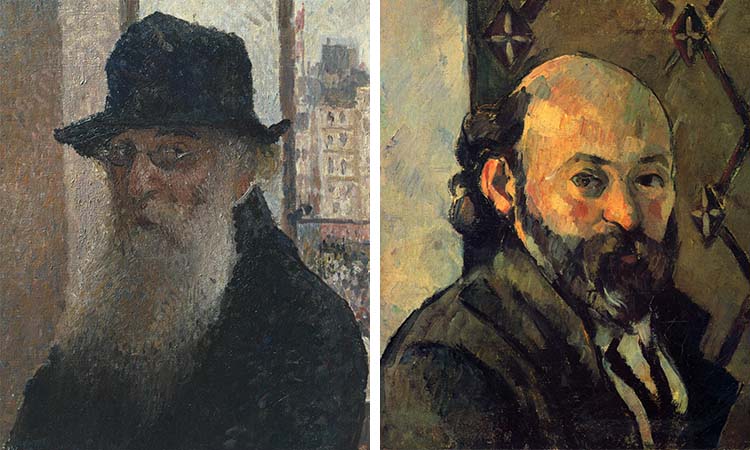
In art history, we tend to recognize the individual artist. However, many of the famous painters, draftspeople, and sculptors we know were also in contact with each other. Some of these creative relationships even blossomed into lifelong friendships that made an impact on artists' professional and private lives.
Vincent van Gogh and Paul Gauguin, for instance, had one of the most well-known and tumultuous friendships. They lived together for nine weeks in southern France and exchanged views on painting. Edgar Degas and Mary Cassatt were another pair of famous friends. They began as mentor and mentee and steadily grew into a steady partnership in different artistic pursuits.
Scroll down to learn about five famous artist friendships.
Learn about five sincere artist friendships that nurtured creativity.
Degas and Cassatt

Left: Edgar Degas, “Self-Portrait,” 1854-55 (Photo: Wikimedia Commons, Public domain)
Right: Mary Cassatt, “Self-Portrait,” c.1880 (Photo: Wikimedia Commons, Public domain)
Camille Pissarro and Paul Cezanne

Left: Camille Pissarro, “Self-Portrait with Hat,”1903 (Photo: Wikimedia Commons, Public domain)
Right: Paul Cézanne, “Self-Portrait,” 1880-81 (Photo: Wikimedia Commons, Public domain)
Vincent van Gogh and Paul Gauguin

Left: Vincent van Gogh, “Self-Portrait with Grey Felt Hat,” 1887-88 (Photo: Wikimedia Commons, Public domain)
Right: Paul Gauguin, “Self-Portrait,” 1893 (Photo: Wikimedia Commons, Public domain)
Vincent van Gogh and Paul Gauguin had one of the most famous and best documented creative relationships. And while Van Gogh definitely regarded Gauguin as a friend, it was not an easy friendship. Their contrasting temperaments and views on art led to numerous quarrels.
In spite of these differences, the pair lived together in Arles, France, for nine weeks, during which time they painted side-by-side and exchanged ideas, such as painting from memory versus painting from observation. Van Gogh held a deep respect for Gauguin's style and artistic choices, and eventually, Gauguin recognized Van Gogh's talent as well.
Man Ray and Marcel Duchamp

Left: Man Ray, “Portrait of Marcel Duchamp,” 1920-21 (Photo: Wikimedia Commons, Public domain)
Right: Carl Van Vechten, Photograph of Man Ray in Paris, 1934 (Photo: Library of Congress via Wikimedia Commons, Public domain)
Andy Warhol and Jean-Michel Basquiat

From left to right: Andy Warhol, Jean-Michel Basquiat, Bruno Bischofberger, and Fransesco Clemente, 1984 (Photo: Wikimedia Commons, CC BY-SA 4.0)
In the late 20th century, Jean-Michel Basquiat turned the contemporary art world on its head with his graffiti art and crown-topped paintings. After his SAMO© graffiti series, he was introduced to Andy Warhol, who was already a prominent artist of the Pop Art movement. They began collaborating together, and their work quickly caught the attention of New York City's art scene.
Some, like Warhol's own studio assistant Ronny Cutrone, believed it was motivated purely by personal gain. “Jean-Michel thought he needed Andy’s fame, and Andy thought he needed Jean-Michel’s new blood,” he said. Others, however, insisted that their pairing was both professional and platonic, and inspired by creativity.
Related Articles:
20 Famous American Artists You Should Know
20 Famous Artists Everyone Should Know, From Leonardo da Vinci to Frida Kahlo
35 Brilliant Quotes About Art From Famous Artists and Great Creative Minds






















































































